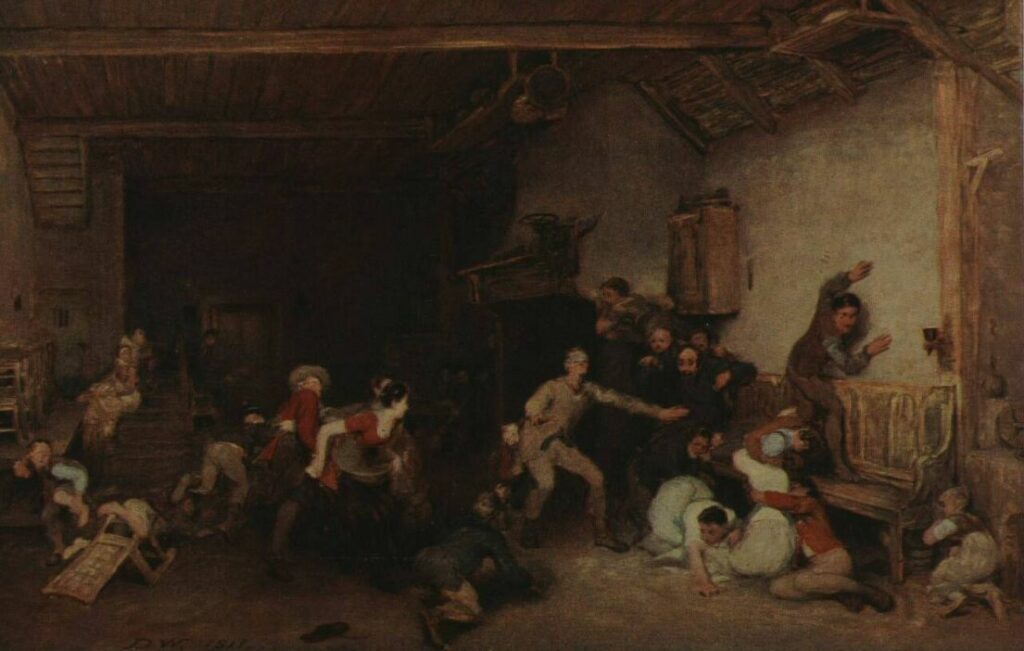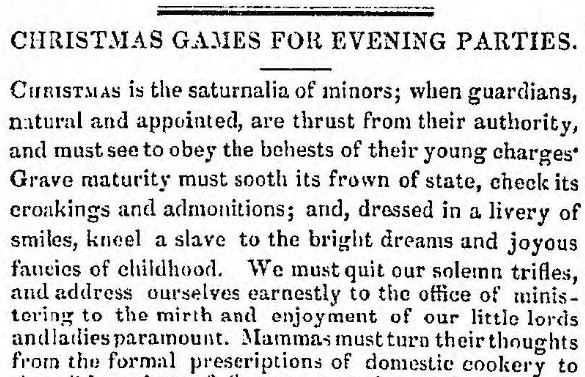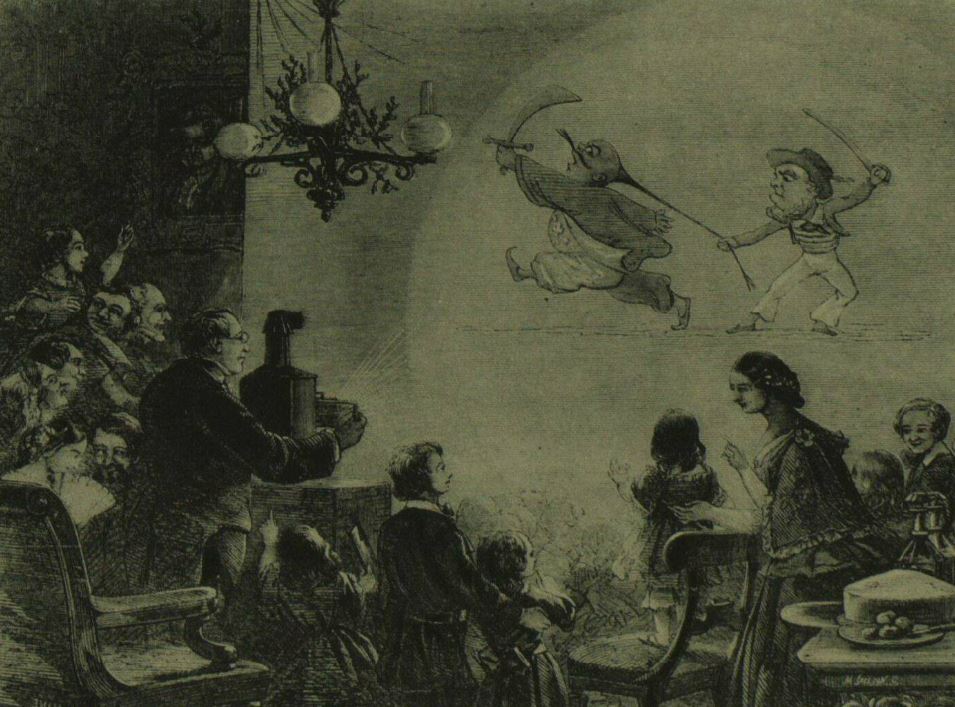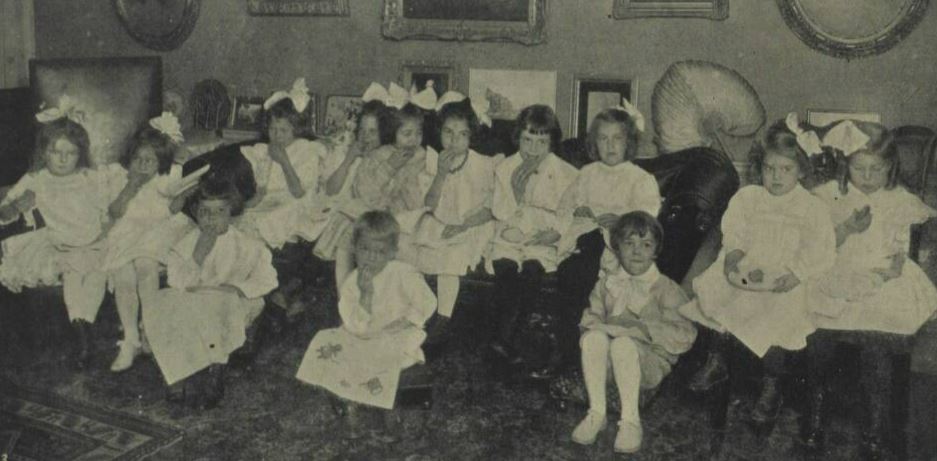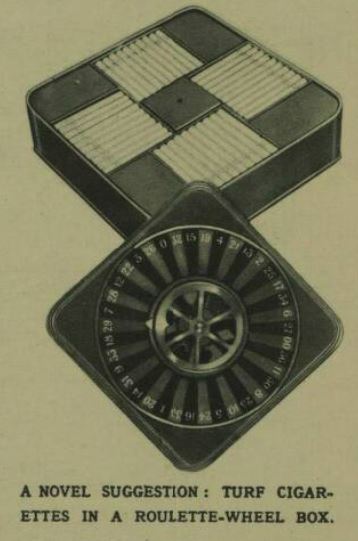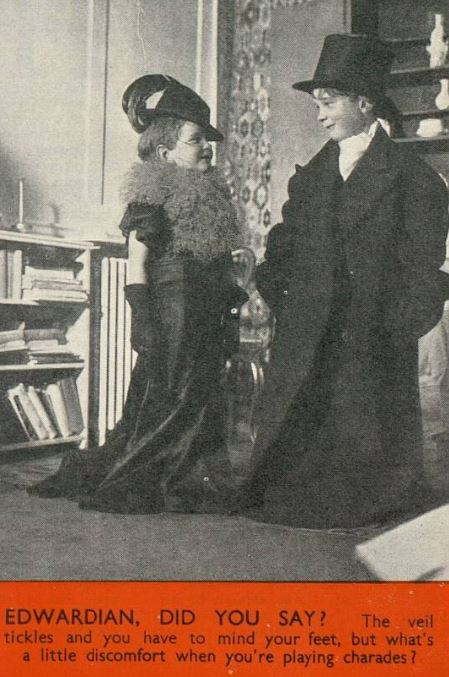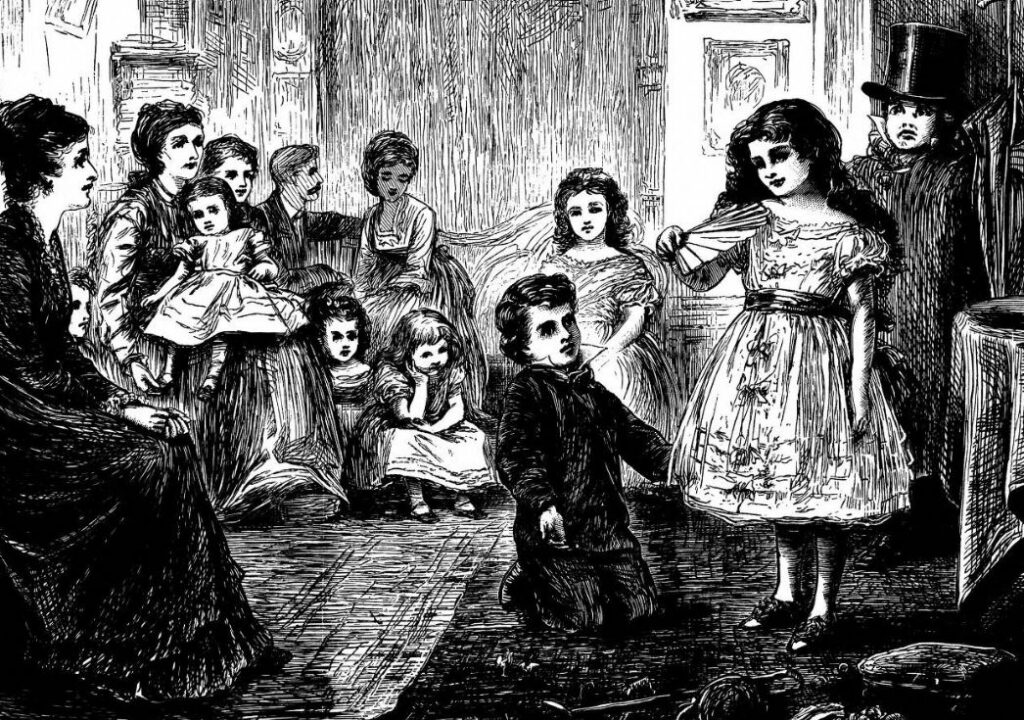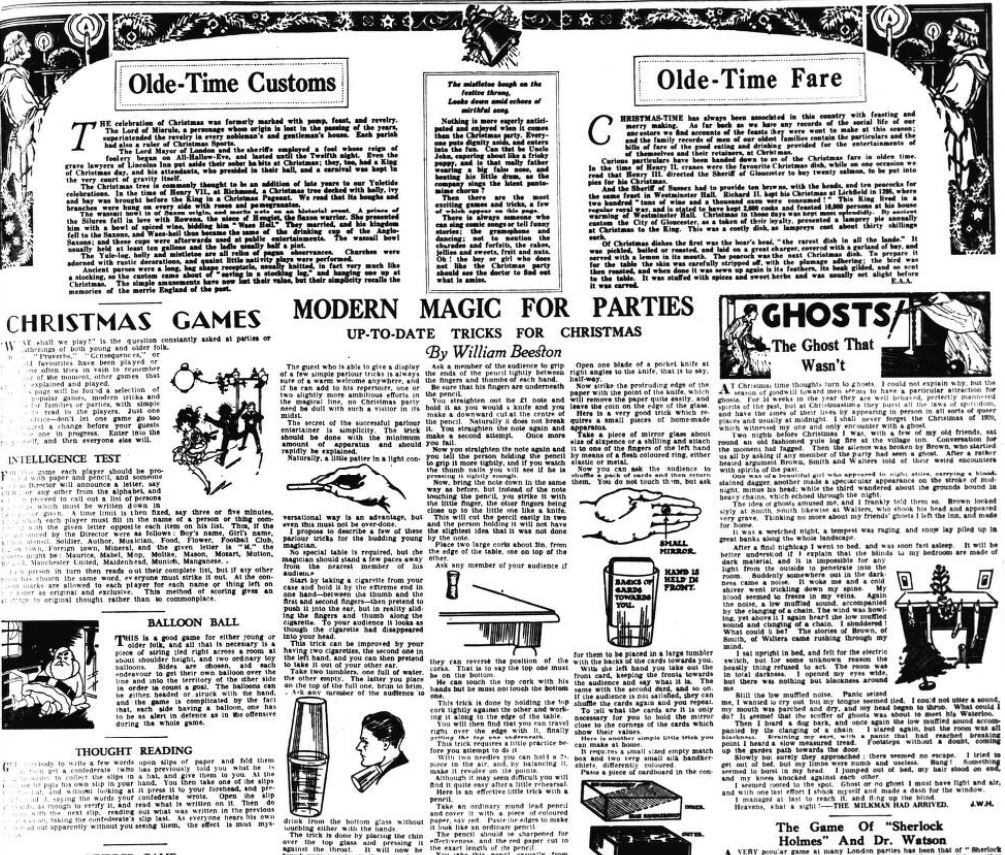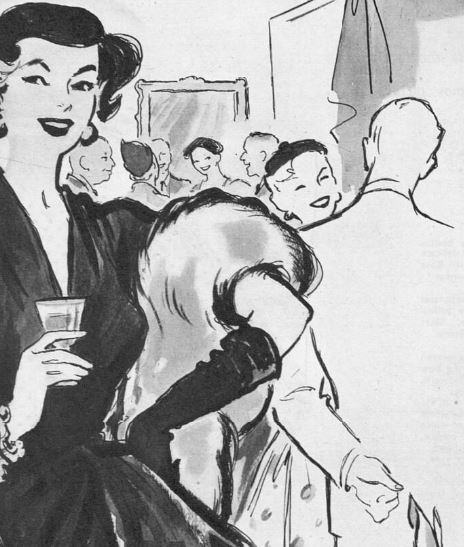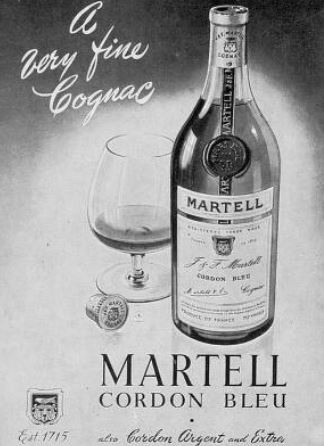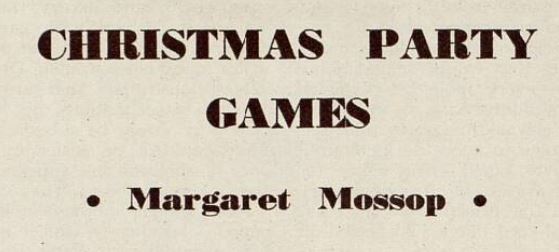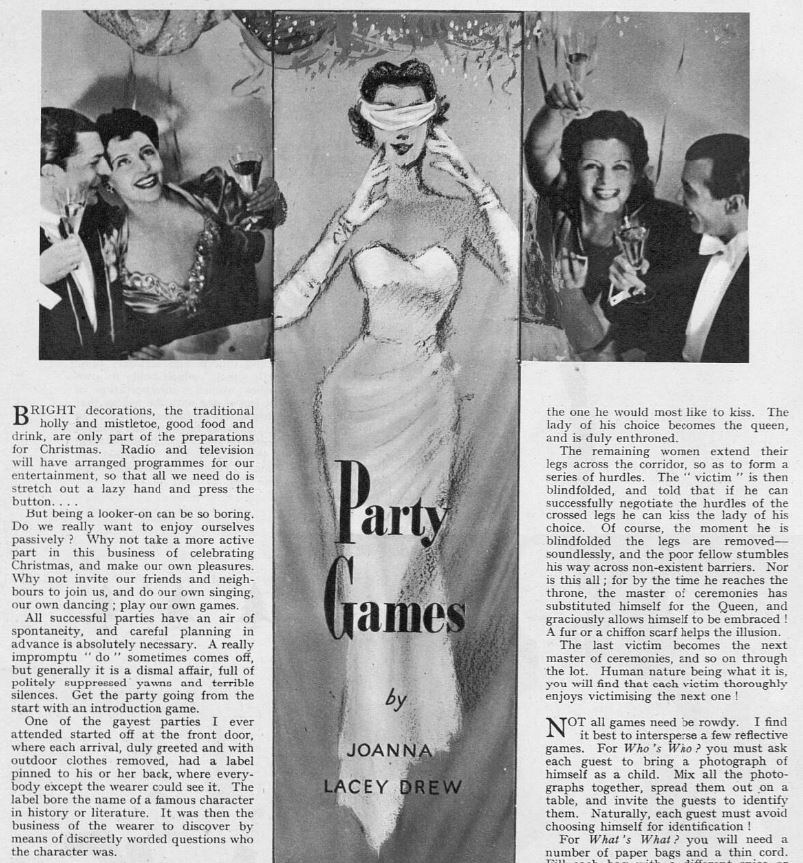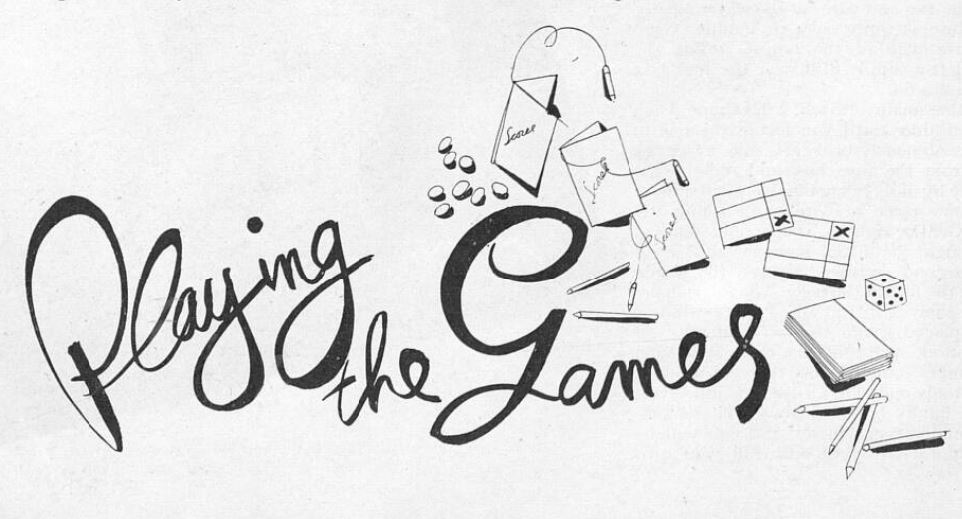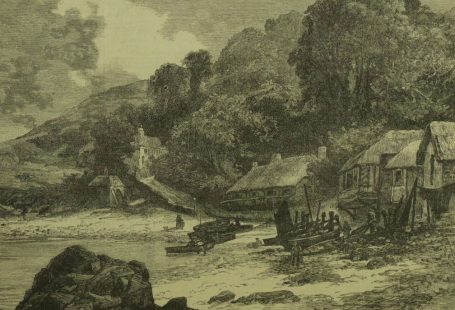Leslie Deakin, writing for The Tatler in November 1951, explains how ‘Christmas has its own traditions in games,’ and so, in this special blog, we are going to look at 20 Christmas party games from years gone by, all taken from our newspapers.
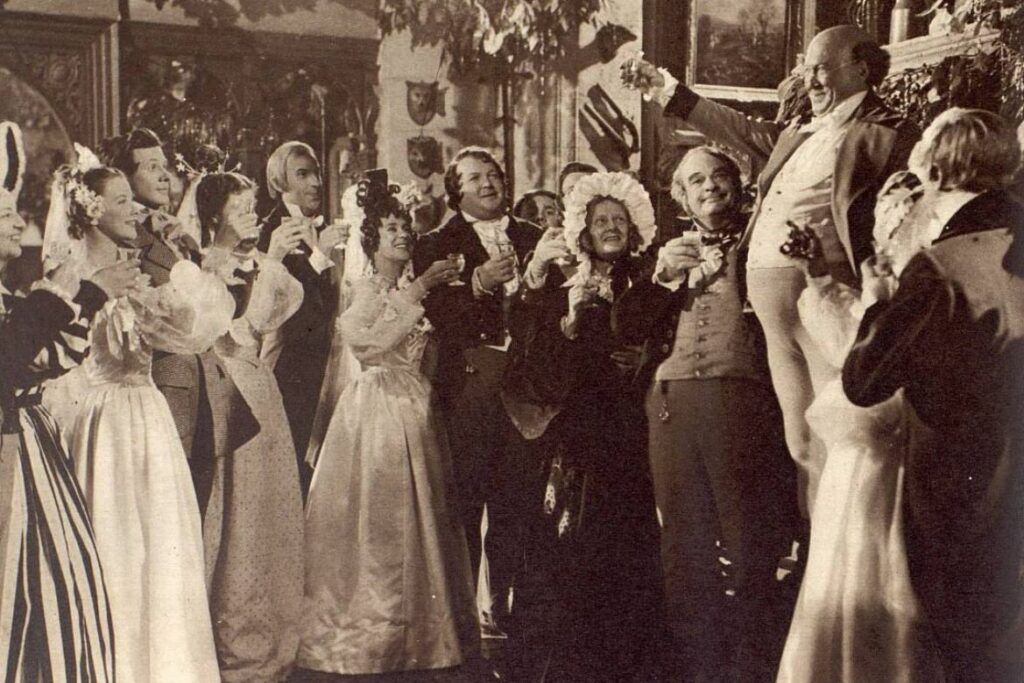
From the familiar games that we know and love today, to those that have fallen out of fashion, we will explore 20 different Christmas party games that may or may not provide you with some inspiration for your celebrations this Christmas.
So without any further ado, let’s get cracking!
Register now and explore the Archive
1. Blind Man’s Buff or Hoodman’s Blind
In Leslie Deakin’s survey of the Christmas party games of ‘yesteryear’ for The Tatler, he notes one of the oldest surviving Christmas games to be still played in Britain as blind man’s buff. This game ‘came to England from the Continent’ some ‘five hundred or six hundred years ago.’
Deakin describes how:
It was first called ‘Blind Man’s Buffet,’ because of the buffeting that a famous French warrior, blinded in battle, doled out to the enemies encompassing him. In England we used to call it ‘Hoodman Blind,’ and the old drawings and engravings show a player, his eye blind-folded by his hood. A favourite at the children’s party a hundred years ago, ‘Blind Man’s Buff’ still holds its own among the diehard class of diversion.
2. Musical Chairs
Another game familiar to us today and highlighted by Leslie Deakin as a popular Christmas party game from years gone by is musical chairs. But are you aware of this interesting Scottish spin on the traditional game?
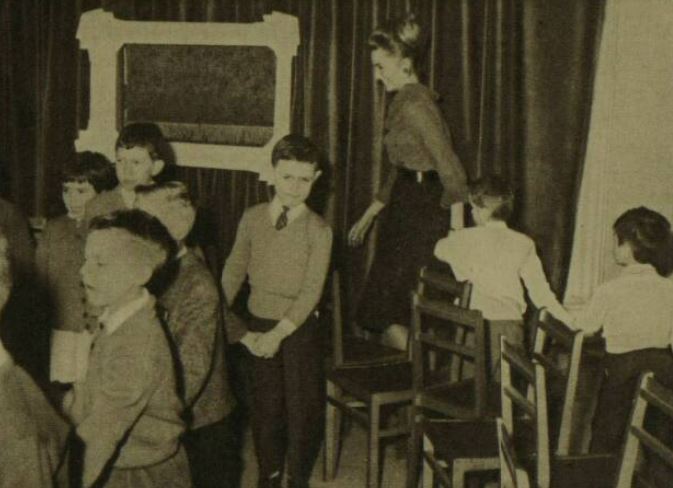
Deakin describes how:
Dr. Jamieson, a Scottish historian, has reminded us that ‘Musical Chairs’ as it is played in Lothian and the south, is there known as ‘Change Seats, the King’s Coming,’ and celebrates the wild scramble for places that marked the change in political regime.
3. The Doctor
From the familiar to the obscure now, and a Christmas party game that was suggested by the Belfast News-Letter in the mid nineteenth century. In an article entitled ‘Christmas Games for Evening Parties,’ published on 26 December 1853, a variety of unusual and entertaining party games are suggested by the writer, who waxes lyrical about such festive pursuits:
Commend us ever to the frank and genial pleasures of innocent games, where the stakes are a joint-stock of frolic, fun, and gaiety; our gains are the gains of all; our loss, haply, a little stiffness and self-conceit – better parted with than kept; and where the keen strife of wit with wit is a generous emulation for uncostly honours, to which defeat brings no pangs of envy, no sour griping of regret – while triumph becomes a general jubilee.
Christmas party games represent a chance for pleasure, the pleasure of the abandonment, albeit a temporary one, of life’s cares and worries. And one of the games recommended by the writer is called ‘The Doctor,’ although the writer notes how ‘to play this game it is not necessary, as might be supposed, to have taken a degree, or to have passed the College of Surgeons.’
Unlike blind man’s buff, or musical chairs, with which we guess our readers will be familiar, we imagine that we will need to outline the rules of ‘The Doctor.’ The writer for the Belfast News-Letter explains how:
The prescriptions of our doctor are distributed hap-hazard. The individual who personates the doctor takes his place to the right of the semicircle formed by the other players, who are all presumed to be his patients. Beginning with the one next to him, he gives a consultation to each in succession, going through the usual business of feeling the pulse, poking the ribs, and auscultating, and asking questions, as to their various complaints – the origin of which he attributes to any absurd cause, such as over-eating, love, catching cold from talking to a very frigid young lady, &c.
And then the doctor must give the false illness ‘a very hard crack-jaw name, real or manufactured – as, for instance, elephantiasis, peri-pneumonia, and prescribe a number of drugs with unpronounceable designations, at the same time taking down a note of each prescription.’ After all of the patients have been assigned a diagnosis and a remedy, the doctor then asks ‘one of the players to tell him what the matter is with any of his patients,’ and they must give the name of the disease and the remedy prescribed exactly, or they are out of the game or given a forfeit.
4. Magic Lantern Show
And whilst those in Victorian parlours of the 1850s might have been amused by the game of ‘Doctor,’ new inventions in that decade brought new methods of entertainment to Christmas parties.
In April 1932 the Illustrated London News looked back to 1858, and a ‘Christmas-party magic lantern show’ given by one Professor Smiley. Dubbing the magic lantern show as the ‘The Pictures, as they were in 1858,’ Professor Smiley is remembered by the publication for being ‘a great man amongst scholastic institutions of the metropolitan suburbs, and at his best when specially engaged for a Christmas party.’
5. Christmas Pie
Fast forward into the twentieth century, and in November 1908 the Illustrated London News published a selection of ‘Fireside Games for the Children’s Christmas Party,’ one of which was called ‘Christmas Pie.’
A guessing game, the game started with the children singing ‘We’re going to make a Christmas pie’ three times. Finally, they sing ‘And what will you put in it?’ Each child then describes ‘some material for the pie,’ and the ‘others guess what it is.’
The child with the most ‘correct guesses receives a pie.’ Win, win, we think!
6. The Christmas Ship
Another Christmas party game for children was described by The Sphere in November 1913 in a piece entitled ‘Some Little Amusement Ideas for Christmas Afternoon.’ It recommends ‘The Christmas Ship’ as a ‘a game worth trying,’ and describes how the game should be played:
The children sit in a circle to play it. One child, who starts the game, says to his neighbour:- ‘The Christmas ship has come in.’ ‘What did it bring you?’ asks the next child. ‘A Jack-in-the-box,’ says the first child perhaps, beginning at once to imitate the springing motions of a Jack-in-the-box.
The next child then pretends to be a Jack-in-the-box, whilst also saying to their neighbour ‘My Christmas ship has come in.’ The child is then asked what the Christmas ship has brought them, and their reply might be a ‘lion.’ And so the child roars like lion, all the while pretending to be a Jack-in-the-box. And so:
By the time a few human Jacks-in-the-box are in motion, some of the lions roaring, two or three trains steaming around the room, and some little girl dolls trying to say mamma and papa the game will become hilarious and probably need a little control, but it is a good children’s game.
7. Cigarette Roulette
Something for the adults now, and a very 1920s Christmas party game. On 8 December 1928 the Illustrated London News describes how there ‘is nothing like roulette to set a Christmas party swinging,’ this particular brand of roulette relating to cigarettes.
A ‘Turf’ roulette cabinet contained ‘two hundred ‘Turf’ Virginias – the healthy cigarette made from tobacco aged and matured in the wood – a roulette board, brass spinning wheel, and complete table plan with full directions.’ The Illustrated London News describes how this game of cigarette roulette will ‘give continuous pleasure, for the roulette-wheel will amuse a wide circle of friends for a very long time to come, and the box can always be refilled.’
8. Charades
A list of Christmas party games would not be complete without mention of charades, but in years gone by, charades was played a little differently.
In a December 1936 article called ‘Christmas Party Games‘ in the Warwick and Warwickshire Advertiser, the writer advises how ‘if you want your party to go with a swing from start to finish, you must arrange a programme of games beforehand.’ And ‘always in favour’ at Christmas time was charades, and the newspaper was on hand to help make the game ‘more exciting.’
To do this, you should ‘have a box of stage properties, and costumes available.’ The article recommends how:
There need not be anything elaborate, but a few old fancy dresses, a man’s hat, an umbrella, a lady’s dress and coat, a rug, an old sheet or two, some gold and silver paper, a roll of cheap muslin, a pair of scissors, some safety-pins, ordinary pins, and drawing-pins, and so on, will come in very useful.
Now, this is where the 1930s version of charades seems to differ from the one we know today. First of all, the Warwick and Warwickshire Advertiser says that ‘charades can be acted with or without words, just as the players please,’ whilst outlining ‘another kind of charade.’ This other type of charade seems to be needlessly complicated in our minds, but in case you’d like to give it a go, here’s how to play:
The party divides into two as in charades, one part being the players and the other audience. The players choose a celebrity’s name and act each letter of the name separately, with a final scene bringing in the celebrity himself. Suppose the word Nelson is chosen; the six letters might be represented by Nero, Elizabeth, Louis XVI, Sampson, Ophelia, and Napoleon. The actor presents in dumb show a scene from the life of each; thus Nero, draped in a sheet, plays the fiddle, while the others pretend to empty water-pots on the imaginary flames. Nelson, wounded in the cock-pit, would close the series; and the audience has to guess each name and the word selected.
9. Let’s Go Shopping
Another Christmas party game recommended by the Warwick and Warwickshire Advertiser in December 1936 is called ‘Let’s Go Shopping.’
This game should be played as follows, although we might have difficulty today in playing this game as we tend to do all of our food shopping at the supermarket:
Put all the chairs in a circle, and everyone sits down except the ‘shopper,’ who stays in the centre of the ring. All those seated choose the kind of shop each is going to keep – grocer’s, baker’s, butcher’s, etc. Then the player in the centre starts shopping. ‘A pound of rice – a Madeira cake – a dozen bananas!’ he may call out in quick succession, and just as quickly as the grocer, the baker and the fruiterer step into the centre.
And then:
Suddenly, on top of the brisk order, the shopper cries, ‘And that’s all for-today, thank you!’ and grabs a chair, the others following suit. The player left without a seat becomes the shopper in the next round.
10. Punch and Judy
Although a staple of summer entertainment at the seaside, Punch and Judy often make an appearance at Christmas parties, as The Tatler in December 1948 describes.
The magazine pictures a young party guest taking ‘advantage of a moment when everybody is looking the other way’ to peak behind the curtain of the Punch and Judy show.
11. Film Titles
As we slip now into the 1950s, writer for The Tatler Margaret Mossop had plenty of suggestions for Christmas party games. On 6 December 1950 the publication featured a range of suggestions authored by Mossop, including one called ‘Film Titles.’
Mossop writes:
Ask your guests to come representing some well-known film – e.g. ‘Whisky Galore’ could have a couple of empty whisky bottles in his pocket, and ‘If Winter Comes’ a scarf around her neck. The idea is for everyone to guess who’s who. This game quickly breeds acquaintance amongst the guests.
12. That’s Odd
A few years later in November 1952 Margaret Mossop returned for The Tatler to provide another twist on breaking the ice at Christmas parties, suggesting a game called ‘That’s Odd.’
This involved asking:
…your guests to come to the party with something odd about their dress, i.e. a lady could come with only one ear-ring, or one stocking on the wrong side, a man with only one cuff link, or a waistcoat button undone. Then each guest must go round and find what is odd about the other guests. This is a very good game for getting the guests ‘warmed up’ especially if at the same time you hand round drinks.
13. Advertisements
And once your guests were warmed up, Mossop had plenty more suggestions for Christmas party games, like this one called ‘Advertisements,’ which she suggested in December 1950:
Prepare beforehand a selection of advertisements from magazines, taking out the actual name of the advertisement; number them and pass them round to your guests, asking them to write down what they think each one represents. First correct list wins.
14. Guessing Game
Guessing games are a hallmark of Christmas party games, and this one, also recommended by Margaret Mossop, appears like an easy one to pull together. She writes:
Prepare some lists (one per person) as follows: Town, County, River, Film Star, Author, Animal, Book Title, Colour, Racehorse, etc. Pass one to each guest, then choose a letter of the alphabet: say D is chosen, everyone has to think of a town beginning with D and so on down the list, given in time. Marks are awarded as follows: you only score a point if you have something on your list which no one else has. Highest number of points win.
15. Articles on a Tray
From guessing games to memory games, ‘articles on a tray’ is another staple of Christmas party games, even to this day. Margaret Mossop in December 1950 outlines how this game should be played:
Prepare a tray containing several articles, such as a key, cotton-reel, teaspoon, etc. Bring into the room and allow everyone to look at it for three minutes, then remove it. The idea is for guests to make a complete list of articles on the tray. First correct list wins.
16. Hidden Treasures
The benefit of the Christmas party games suggested by Margaret Mossop is that they could be conducted with items found around the home – no buying of expensive board games, or karaoke equipment. This was true of another one of her recommendations from November 1952, which was called ‘Hidden Treasures.’
This game had to be arranged before the party guests arrived, the hosts having to ‘hide round the room a number of small articles, such as a halfpenny, matchstick, aspirin, cork, button, etc.’ When the guests were ready to play the game, they should be given a pencil and paper, and asked to go around the room and write down where they have spotted the ‘hidden treasures.’
17. Guess What’s Inside!
Another guessing game described by Margaret Mossop was entitled ‘Guess What’s Inside!,’ which also made use of everyday objects.
She outlines the game as follows:
Collect a number of articles, i.e. egg cup, clothes peg, paper knife, etc, etc. Place each article in a small bag (old 3 lb. flour bags are just the thing). Fasten securely, and number each bag. These are then passed round the guests and the idea is for them to guess what each bag contains by feeling only. They should write down on a card marked with the numbers what they think each bag contains. Alternatively this game can be played as a team game.
18. Musical Hats
For our final Christmas party game courtesy of Margaret Mossop (thank you, Margaret), we think we have saved the best till last. This game is ‘Musical Hats,’ which should be played as below:
Collect a number of old hats and caps; the funnier the better. The guests should sit round in a circle; when the music starts everyone should be wearing a hat except one person. The guests then take a hot off the head of the person on their right and put it on their own head. When the music stops the person without a hat is ‘out’ as in Musical Chairs. The funnier the hats, the more amusing the game.
19. Printers’ Errors
Our final two Christmas party games from years gone by are taken from suggestions in the Irish Weekly and Ulster Examiner from the 1960s, when Christmas party games saw a new form of competition: the television. But the Northern Irish newspaper was on hand to suggest a selection of games in case party guests grew ‘tired of T.V.’
One of these was entitled ‘Printers’ Errors,’ and because it is based on newspapers, we had to include it in our list of Christmas party games.
‘Printers’ Errors’ should be played as follows:
…from a new article in your morning paper, cut an interesting paragraph of about 20 lines. Jumble up these lines and have the results duplicated on a typewriter, making sure there is a copy for each guest taking part. The game is to arrange the lines in their correct order in the quickest time, a limit being decided on at the beginning, and the first to hand in a correct sheet being the winner.
20. Dutch Band
Our final recommendation for Christmas party games comes from the Irish Weekly and Ulster Examiner from December 1961, and captures that element of silly fun so vividly described by our writer from 1853. This game is called ‘Dutch Band,’ and is played as below:
The leader assigns an instrument to each player, including himself, and names a popular tune of the moment. At a given signal they all start playing, making the gestures with their hands and the sounds with their mouths. Whenever he likes, the Leader changes to the instrument of one of the other players. This player must at once change to the instrument which the Leader has abandoned, or play a forfeit…or be eliminated from the game, whichever was previously arranged. The fun of this game is that it must be played really quickly.
Well, that’s it for our 20 Christmas party games from years gone by. Which of these games might you play this Christmas, and what other Christmas party games from history can you find in the pages of our Archive?


